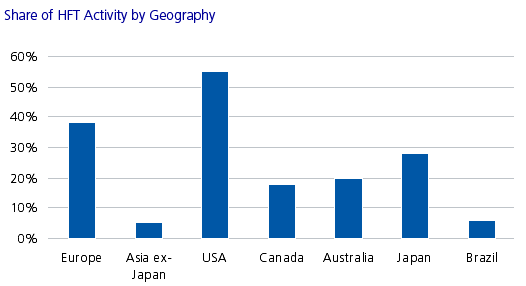High Frequency Trading: Looking to Asia for Succor?
Abstract
High frequency trading (HFT) is at a cross-roads. It has achieved harmonization and efficiency gains in leading global cash equity markets in the US and Europe, but the potential for further growth has been reduced. Falling volumes and volatility in these markets have decreased opportunities for profit. Furthermore, the overall profitability of HFT has been called into question.
In this report, High Frequency Trading: Looking to Asia for Succor?, Celent examines the profitabil- ity of HFT in conjunction with the growth of the Asian markets. The report also looks at the impact of increasing globalization and electronic trading on the development of cross-asset trading.
As technology evolves rapidly, it is possible for trading desks to deal more easily in multiple assets across global markets. Globalization has meant greater integration of economies worldwide, and this has been coupled with an increasing interest and participation of HFT players in the leading Asian markets. Although the US and Europe continue to lead in share of HFT in respective markets, it is clear that HFT is making significant progress in other geographies such as Japan, Australia, and Canada.

“The honeymoon period for HFT is over, and market participants are taking a long and hard look at the profitability and impact of HFT strategies,” says Anshuman Jaswal, Celent Senior Analyst and coauthor of the report. “However, this can be viewed as a period of consolidation, and we expect HFT to adapt and grow to meet the needs of the multiasset trading environment.”
“HFT’s slowdown in growth in the US and Europe is a possible result of the fact that a lot of the potential has already been achieved in these markets,” says Muralidhar Dasar, Celent Analyst and coauthor of thereport. “The Asian market is going to be at the forefront of HFT’s growth over the next few years, and this is something a number of the leading participants are gearing up for.”
This report looks at the evolution of HFT in the leading global markets over the last few years. It discusses the drivers of HFT and the various strategies adopted by HFT participants. The report also looks at recent changes in the US and European markets, where HFT seems to have fulfilled a lot of its potential. The important role of regulation is also studied for different markets, along with a special focus on the Asian market. Finally, the report analyzes the important trend of multiasset trading and its synergies with HFT.

